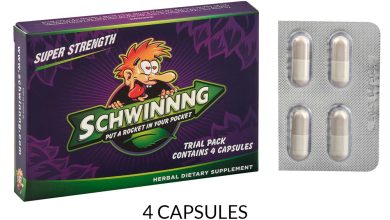Foods To Avoid While Taking Cymbalta (duloxetine)

For most people, taking a new medication may mean switching up your lifestyle a bit and that includes the foods you eat. A food-drug interaction means that a specific nutrient or compound within the food changes the way your body metabolizes the medication, and this can either enhance or reduce the dose your body gets, according to Johns Hopkins Medicine. The potential results: an increased risk of side effects, many of which can be dangerous, or the drug not working as it was intended.
Before introducing a medication, ask your pharmacist about any food interactions, including with alcohol, and any adjustments you may have to make to your diet. In this article, we will discuss Cymbalta and the foods to avoid while taking it.
What is Cymbalta?
Cymbalta is a brand of duloxetine, a selective serotonin, and norepinephrine reuptake inhibitor antidepressant (SSNRI). Duloxetine affects chemicals in the brain that may be unbalanced in people with depression. Cymbalta is used to treat major depressive disorder in adults. It is also used to treat general anxiety disorder in adults and children who are at least 7 years old.
Cymbalta is also used in adults to treat nerve pain caused by diabetes (diabetic neuropathy), or chronic muscle or joint pain (such as low back pain and osteoarthritis pain). Cymbalta is also used to treat fibromyalgia (a chronic pain disorder) in adults and children at least 13 years old.
How should Cymbalta (duloxetine) be taken?
Duloxetine comes as a delayed-release (releases the medication in the intestine to prevent break-down of the medication by stomach acids) capsule to take by mouth. When duloxetine is used to treat depression, it is usually taken once or twice a day with or without food. When duloxetine is used to treat generalized anxiety disorder, the pain of diabetic neuropathy, fibromyalgia, or ongoing bone or muscle pain, it is usually taken once a day with or without food. Take duloxetine at around the same time(s) every day. Follow the directions on your prescription label carefully, and ask your doctor or pharmacist to explain any part you do not understand. Take duloxetine exactly as directed. Do not take more or less of it, take it more often, or take it for a longer time than prescribed by your doctor.
Typical starting doses of Cymbalta (duloxetine) are 30 to 60 mg by mouth once daily. Swallow the delayed-release capsules whole; do not split, chew, or crush them. Do not open the delayed-release capsules and mix the contents with liquids or sprinkle the contents on food.
Your doctor may start you on a low dose of medication and increase your dose after one week.
Foods to avoid while taking Cymbalta (duloxetine)
There are several foods and beverages you should avoid while taking Cymbalta (duloxetine) they include:
- Grapefruit or grapefruit juice: Avoid mixing Cymbalta (duloxetine) with grapefruit or grapefruit juice it may increase the risk of side effects or overdose. The acidic fruit interferes with the metabolism of the drug and may allow it to build up in the patient.
- Alcohol: When taking Cymbalta (duloxetine), do not drink alcohol because it increases your risk of liver damage, can worsen side effects, and may make the medication less effective in treating your anxiety or depression.
- Coffee: Drinking a lot of coffee, cola drinks, or other caffeine-containing drinks when taking Cymbalta (duloxetine) can put you at a higher risk of getting serotonin syndrome which may include symptoms such as confusion, hallucination, seizure, extreme changes in blood pressure, increased heart rate, fever, excessive sweating, shivering or shaking, blurred vision, muscle spasm or stiffness, tremor, incoordination, stomach cramp, nausea, vomiting, and diarrhea.
- St John Herb: Do not take the herbal remedy St John’s wort while you’re being treated with Cymbalta (duloxetine), as this will increase your risk of side effects. There’s not enough information to say that other herbal remedies and supplements are always safe to take with duloxetine.
- High-fat foods: High-fat foods may affect how Cymbalta is absorbed in the body and reduce its effectiveness. Try to avoid high-fat meals before taking Cymbalta.
- Tyramine-containing foods: Tyramine is an amino acid found in certain foods that may interact with Cymbalta and increase the risk of high blood pressure and other side effects. Examples of tyramine-containing foods include aged cheeses, cured meats, fermented soy products, and certain fruits and vegetables. While it is not necessary to avoid these foods entirely, it is best to consume them in moderation and be mindful of how your body reacts to them while taking Cymbalta.
Always talk to your doctor or pharmacist if you have any questions or concerns about dietary factors and medication interactions while taking Cymbalta.





